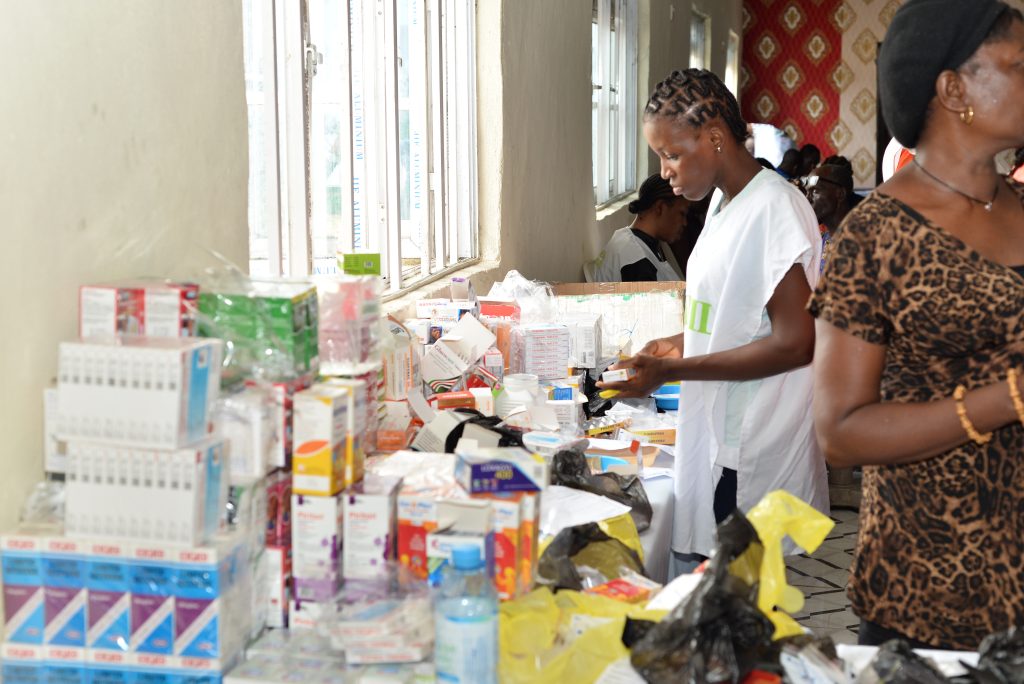HEALTH ARTICLE
Have any queries?
We're here to help.
Nigeria’s Healthcare: Hopes, Promises or Action in 2022
In the 2022 budget of N17.126 trillion, the sum of N593.6bn (3.5 percent) covering recurrent and capital expenditure, was allocated to the Federal Ministry of Health (FMoH), while the sum of N56.143bn (0.3 percent) was allocated for the Basic Health Care Provision Fund (BHCPF); which is under the National Health Act (NHA), 2014. This means that 20 years after the AU Abuja Declaration on Funding National Health Budget, the Nigerian government has yet again failed to allocate the agreed 15 percent of it’s annual budget to the health sector. The NHA 2014 has a robust legal framework for the effective regulation, development, and management of Nigeria’s Health Sector; and also contains a holistic plan of achieving the Universal Health Coverage (UHC) for every Nigerian, including a provision of 1 percent of Consolidated Revenue Funds (CRF). Yet, government have only allocated a fraction of the 1 percent CRF to the FMoH, failing to completely allocate a backlog of hundreds of billions of Naira, 6 years after the NHA was passed into law.
Countries such as Malawi, Burkina Faso, Rwanda, Botswana, Niger, Zambia and Togo, have met the Abuja declaration target. But Nigeria’s commitment remains a far cry from the agreement, as it continues to struggle to surpass half of the proposed 15 percent commitment in its annual budget for the Health sector. Some of government’s reasons for failing to meet the target were based on trying to meet the needs of other sectors such as education, agriculture, and security (including the fluctuating oil price and the dwindling Covid-19 economy) considered to be equally important. Government’s stance clearly justifies Nigeria’s poor performance in the World Health Organization (WHO) rankings for 191 countries. Nigeria only recently moved up 24 places to 163 out of 191, from its previous position of 187 out of 191 countries. The country still has one of the highest numbers of Cholera, Malaria and high infant deaths in the world.
Unfortunately, the emerging COVID-19 variants and increasing cases of the pandemic, is overstretching the limited tertiary health facilities across the country. Tertiary health facilities are being overcrowded because of the poor state of rural health facilities, most of which have long been abandoned. A World Bank data on poverty and equity brief, 2021, relying on a NBC report which indicated that a total of 39.1 percent of Nigerians lived below the international poverty line of $1.90 per person – per day, in 2018/19; 84.6 percent of these people lived in rural areas and 76.3 percent of them emerged from the North Central, North East, or North West regions of the country. Communities across the country are susceptible to diseases and poor hygiene, a long history of negligence, poor access roads, and long distance from neglected primary health facilities to tertiary health facilities, amidst increasing rate of insecurity and poverty. If the NHA, 2014 and the BHCPF, have been adequately funded and utilized, issues of out – of – pocket payment and expensive healthcare still affecting the poor, could have long been solved.
The experience is not different for health practitioners, as about 590 doctors reportedly left the country between January and July 2021, to other countries believed to have a better working environment, better pay and quality health care system. Reports shows that the number of Nigerian doctors reduced from 44, 021 in 2018 to 24, 640 in 2019. About 5, 000 Nigerian doctors have moved to the UK since the past five years; averaging about 1, 000 doctors leaving the country yearly. The WHO report of 4 doctors to every 10, 000 Nigerians (against the global standard of 1 doctor to 600 persons) – clearly affirms the extent of decline in the health sector.
There is the urgent need for the FMoH to get more stakeholders involved, by organizing advocacy partnership in managing the health sector, particularly the Primary Health Centers (PHCs). Civil society activists working on health, environment, community sensitization and empowerment, can help to generate relevant data to ascertain the current state of PHCs across the country, and demand for government action within a timeline. Effective community participation and ownership of PHCs is another key initiative which should be absorbed (and enforced) into already existing rural health sensitization programmes. Considering shrinking global funds, government must cut down on huge recurrent expenditures, by channeling more resources to rehabilitate and monitor abandoned health facilities, protect health workers who are constantly at risk and ensure availability and affordability of drugs in PHCs.
If the government is truly serious about achieving the SDGs goal 3 (by 2030) which talks about: “Good Health and Well-being’’ – of all – at all ages, then, it must act fast by providing solution to the recent statement credited to the Secretary to the Government of the Federation (SGF), Mr. Boss Mustapha; who claimed that ‘about 3,000 PHCs across the country have been left desolate and overtaken by weeds.’
By Rev. Mrs. Josephine Kpere-Daibo
Social Share
We believed that there is hope in our health care system. if you think so too, kindly share.

